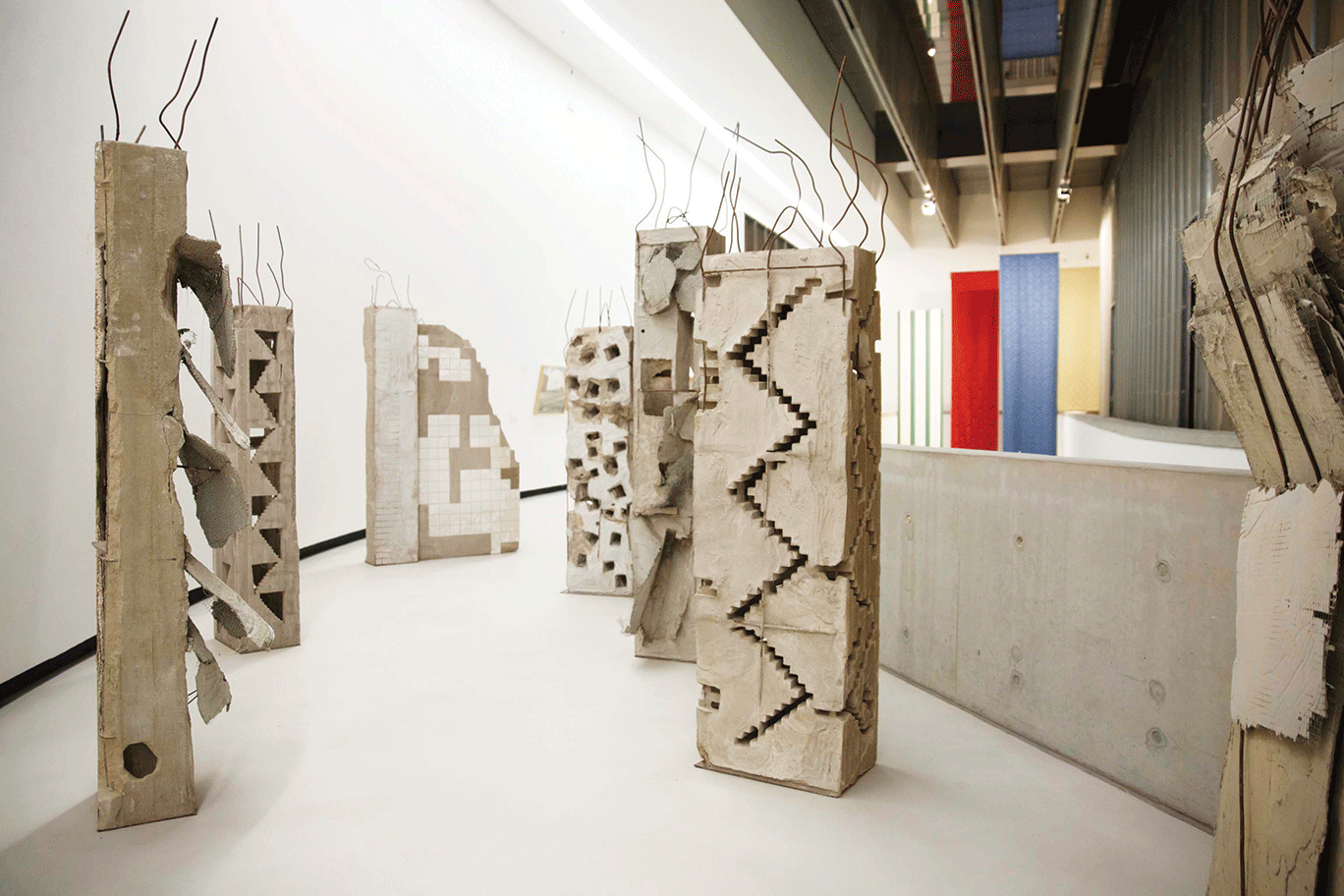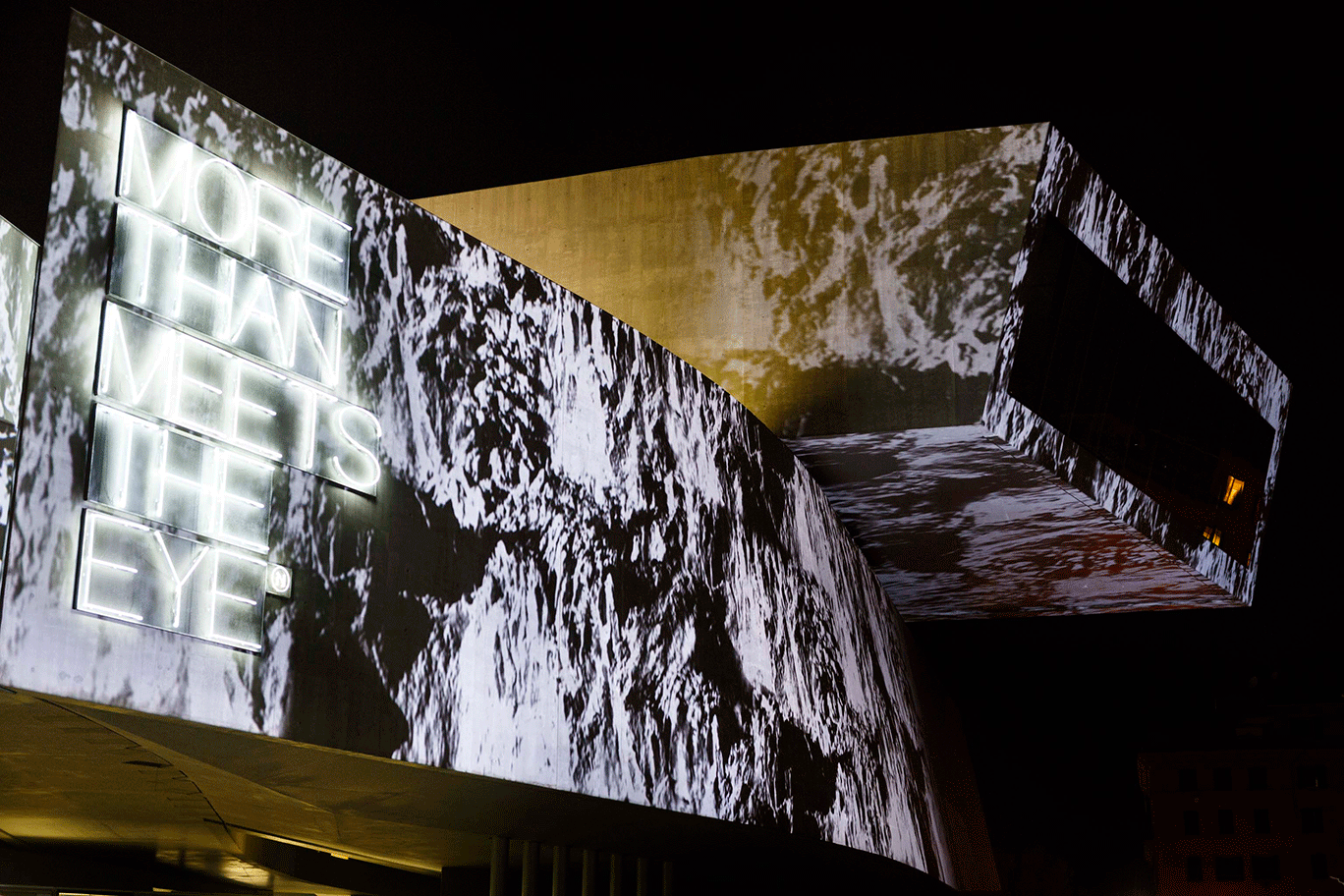« Reviews
Home Beirut. Sounding the Neighbors
Curated by Hou Hanru and Giulia Ferracci
MAXXI - Rome
By Paul Laster
With more than 100 works in a wide range of media by 36 artists, “Home Beirut: Sounding the Neighbors” offered a considered overview of art from the past 30 years by artists related to the Lebanese capital and its diaspora.
Spanning several galleries of the Zaha Hadid-designed MAXXI, the National Museum of 21st Century Arts in Rome, the engaging survey, curated by Hou Hanru and Giulia Ferracci, was divided into four sections-Home for Memory, Home for Everyone?, Home for Remapping and Home for Joy-with each sector being conceived as a “home” devoted to facets of Beirut’s colorful artistic scene.
“Seeking a solution for home making is a profoundly contradictory and ambivalent process here,” Hou stated in his catalogue essay. “It is an unhomely one: while needing to reconstruct a new home is an absolute necessity for all, one loves, on the one hand, in permanent negotiation with the memory of the fear of losing one’s home, the basic locality of life, that has traumatized all during the war. The war is in fact not entirely finished, but transformed into more invisible forms, or displaced into other locations.”
The work in Home for Memory recalled the Lebanese Civil War (1975-1990) and the 2006 conflict with Israel. Mother and son Laure Ghorayeb and Mazen Kerbaj collaborated on diaristic drawings during the 33 days of the Israeli invasion and continue to work on cartoon-like correspondences that they mail back and forth between her home in Beirut and his studio in Berlin.
Paola Yacoub’s photographic series Les Fleurs de Damas documented men suspected of being Syrian secret service agents displaying bunches of roses on the streets for no apparent reason during the Syrian occupation in 2002, while Akram Zaatari’s 2014 video Beirut Exploded Views stages a post-apocalyptic narrative with young Syrian refugees, with smartphones in hand, who are occupying an abandoned construction site over the course of a day.

“Home Beirut. Sounding the Neighbors,” exhibition view at MAXXI National Museum of 21st Century Arts. Photo: Musacchio Ianniello. Courtesy Fondazione MAXXI.
One of the standout works in the Home for Everyone? segment was Ziad Abillama’s sculpture Untitled (Arabes), a directional sign showing that Arabes (French for Arabs) are everywhere. The piece deals with the artist’s identity as a Christian who studied in the West, but since he was born in Lebanon he is assumed to be an Arab by the people he encounters. Meanwhile, identity becomes metaphorically lost at sea in Joana Hadjithomas and Khalil Joreige’s 2016 two-screen video Remembering the Light, which captures clothed divers disappearing into darkness as they swim over the ruins of war on one screen and on the other the colors of a rainbow scarf fade as it sinks into the abyss.
Home for Remapping offered documentary photography by Fouad Elkoury, co-founder of the Arab Image Foundation, shot in Beirut and the surrounding area during the Civil War (photographed between 1977 and 1986) and Marwan Rechmaoui’s giant rubber floor plan (made between 2004 and 2008) that mapped Beirut below the visitor’s feet, as well as his recently constructed concrete pillars that capture the decay and decomposition prevalent throughout the city for several decades. Contrasting this reflection on the past, Walid Raad collaborated with architect Bernard Khoury on diagrams and a model for A Proposal for A Beirut Site Museum: Preface (2016-2036), a plan for a hole in the ground with tunnels leading to what Raad calls “more interesting museums than the one we have.”

“Home Beirut. Sounding the Neighbors,” exhibition view at MAXXI National Museum of 21st Century Arts. Photo: Musacchio Ianniello. Courtesy Fondazione MAXXI.
Finally, Home for Joy examined the city’s rich cultural infrastructure, which has flourished despite the continuous conflicts. The revered poet and artist Etel Adnan presented two folding, scroll-like books, from 2005 and 2010, that blur the boundary between drawing and writing, and a more recent tapestry, which is geometrically patterned with large areas of single colors. Ziad Antar’s amusing videos, shot from fixed points of view, showed different musicians interpreting a song by celebrated Egyptian singer Oum Kalthoum, a man in a shower using his own body as a musical instrument and two children sitting at a piano who start a beat that becomes the basis for their singing.
In her catalogue text, Middle East scholar Rosita Di Peri described Beirut as “The city of contrasts, the city of excesses, the city that never sleeps, the city on the sea, the city clinging to the mountain, the city of war, the Arab city, the French city, the Western city, the Muslim city, the Christian city… the Middle Eastern city par excellence.” This show captured that essence, and more.
(November 15, 2017 - May 20, 2018)
Paul Laster is a writer, editor, independent curator, artist and lecturer. He is a New York desk editor at ArtAsiaPacific and a contributing editor at Whitehot Magazine of Contemporary Art and artBahrain. He is also a contributing writer to ARTPULSE, Time Out New York, Observer, Modern Painters, Cultured Magazine, Harper’s Bazaar Arabia, Galerie Magazine and Conceptual Fine Arts.
Filed Under: Reviews



































Leave a Reply
You must be logged in to post a comment.